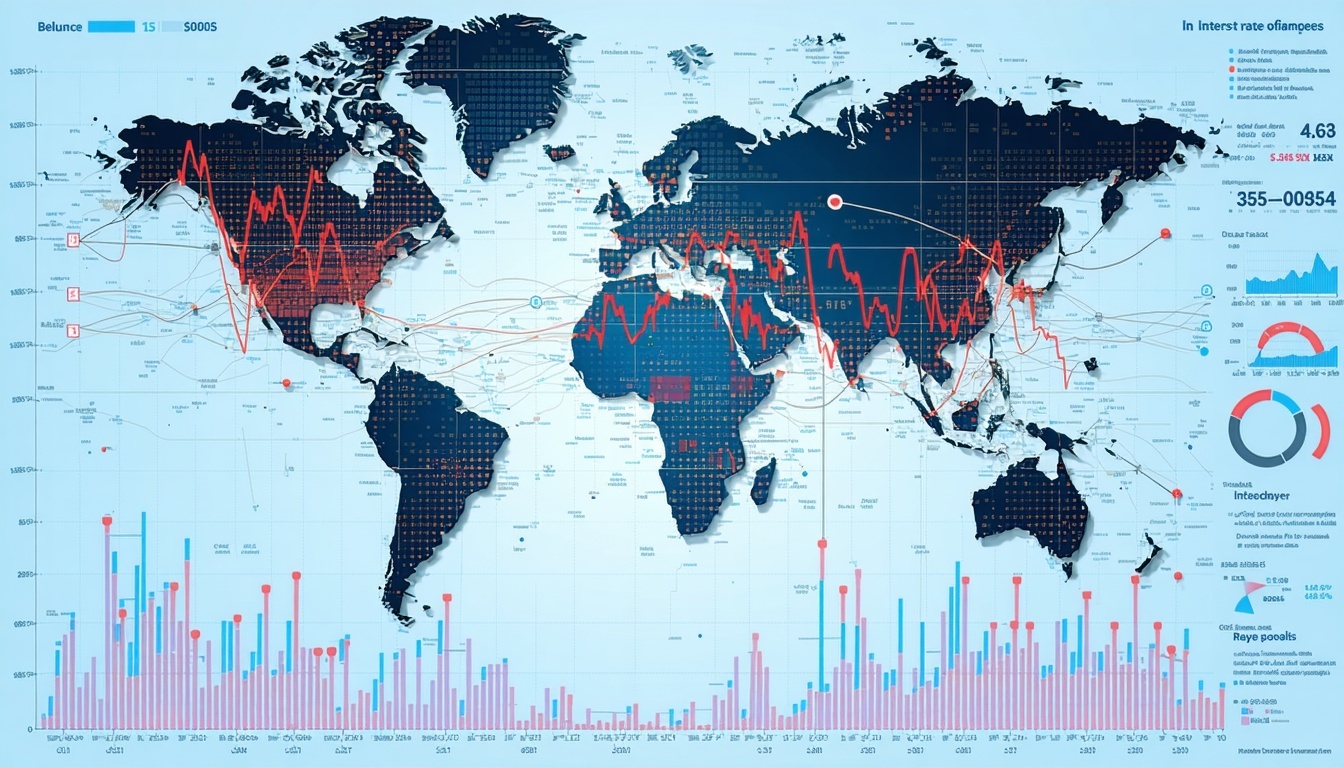Navigating Global Interest Rates: What You Need to Know

Global interest rates are more than just a number—they're a crucial indicator of economic health and a key factor in financial planning.
Understanding the Drivers of Global Interest Rate Changes
Interest rates are influenced by a multitude of factors, from central bank policies to global economic conditions. Central banks adjust interest rates to control inflation, manage employment levels, and stabilize their national economies. For instance, when inflation is high, central banks may increase interest rates to cool down the economy. Conversely, in times of economic downturn, they might lower rates to encourage borrowing and investment.
Other significant drivers include geopolitical events, fiscal policies, and global trade dynamics. For example, trade wars or political instability can create uncertainty, affecting investor confidence and leading to interest rate adjustments. Understanding these drivers is crucial for both personal financial planning and business strategy.
The Domino Effect: How Different Countries are Impacted
Rising interest rates have a cascading effect across the globe. In developed economies, higher rates can lead to stronger currencies, making exports more expensive and potentially slowing economic growth. Emerging markets, on the other hand, might experience capital flight as investors seek higher returns in more stable environments, exacerbating economic instability.
Each country's response to global interest rate changes varies based on its economic structure, debt levels, and monetary policy framework. For instance, the European Central Bank might take a different approach compared to the Federal Reserve in the United States, leading to varied economic outcomes in the Eurozone versus the U.S.
Personal and Business Loans: Navigating the Shifts
For individuals and businesses, rising interest rates mean higher borrowing costs. Mortgage rates increase, making home loans more expensive and potentially cooling the housing market. Small businesses might delay expansion plans due to the higher cost of capital, impacting economic growth and job creation.
To navigate these shifts, it's essential to review and adjust financial strategies. Individuals might consider fixed-rate loans to lock in current rates, while businesses could explore alternative financing options or renegotiate existing debt. Staying informed and proactive can help mitigate the impact of rising rates on personal and business finances.
Investment Strategies in a Fluctuating Interest Rate Environment
Volatility in interest rates requires a strategic approach to investing. Bonds, traditionally seen as safe investments, can lose value as rates rise. On the other hand, sectors like financial services might benefit from higher rates, offering new opportunities.
Investors should consider diversifying their portfolios to balance risk and reward. Real estate, dividend-paying stocks, and alternative investments like private credit can provide stability and growth potential. It's also crucial to stay flexible and ready to adjust strategies as market conditions evolve.
Staying Informed: Tools and Resources for Monitoring Interest Rate Trends
Keeping track of interest rate trends is vital for making informed financial decisions. Various tools and resources can help, including financial news websites, central bank announcements, and economic reports. Subscribing to market analysis from reputable financial institutions can provide deeper insights and forecasts.
EFLOW Capital offers clients access to up-to-date market data and expert analysis, empowering them to make smarter financial decisions. Leveraging these resources ensures you stay ahead of market shifts and can adapt your strategies accordingly.